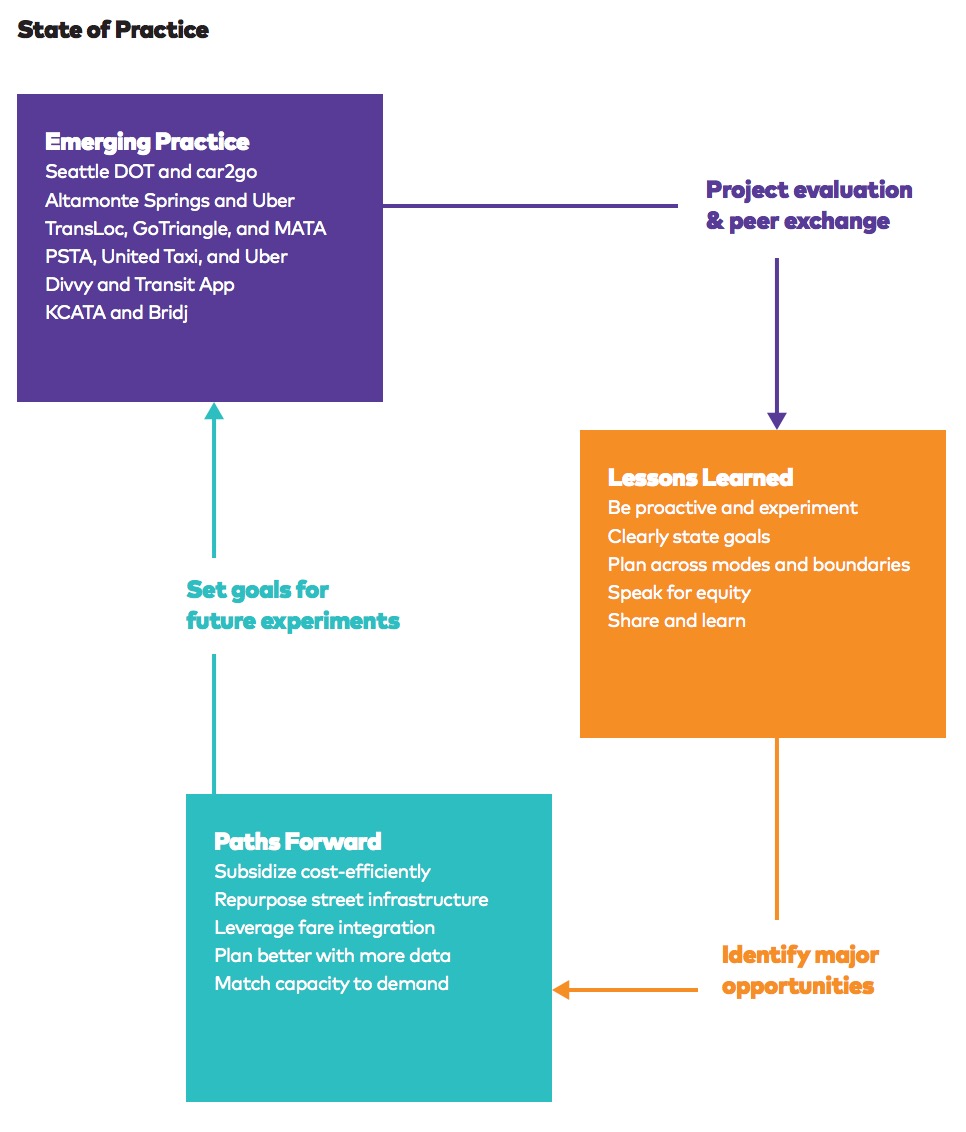TRANSITCENTER
Key Findings
Emerging mobility services like bikeshare, carshare, on-demand transit, and transportation network companies provide more transportation options for customers to choose how to get where they want to go.
Partner to reinforce transit’s strengths
- Emerging mobility services allow for greater transportation efficiency by creating opportunities for more flexible planning by public agencies. If agencies can reduce the cost of providing equivalent or better service in inefficient transit markets, they can reallocate savings to improve service elsewhere.
- Emerging mobility and other third-party data providers hold robust and valuable data that can be used to improve agency planning efforts. Agencies should identify their needs and seek access to these data accordingly, which will in many cases result in stronger reporting requirements.
- Emerging mobility services have not yet transformed public transportation. They will not replace high-quality, fixed-route transit as the most efficient means of moving people along dense urban corridors, and focusing on emerging mobility services is not a substitute for designing walkable, mixed-use neighborhoods or engaging in pedestrian- and transit-oriented planning.
Leverage agency-controlled assets
- The public sector controls valuable assets, like parking spaces and street right-of-way, that can be used to negotiate for contracted services, access to data, or equitable geographic coverage, for example.
- Agencies can subsidize customer trips using emerging mobility providers in order to achieve desired transportation outcomes, such as increased average vehicle occupancy or increased first- or last-mile transit transfers.
Plan for a streamlined user experience
- Agencies who provide high quality open data, especially real-time transit data, and use open data and technology standards will enable more rapid innovation toward streamlined customer trip-planning and payment systems.
- Integrated fare payment system implementation is a valuable leverage point for agencies working with emerging mobility providers.
Be open to new ways of providing useful transit
- Agencies need to proactively start to break down barriers to collaboration with emerging mobility providers––barriers like restrictive procurement processes, work rules, or agency traditions––by creating clear pathways to working together.
- There is a substantial gap between current practice and the anticipated potential for on-demand transit and transportation network companies to serve paratransit trips and other markets that are particularly expensive to serve using fixed-route transit. Public agencies can close this gap by starting with targeted pilot programs with emerging mobility providers.
- As new and existing providers continue to test different business models and growth strategies, public agencies must also experiment and share lessons learned with one another and with emerging mobility providers.
Download full version (PDF): Private Mobility, Public Interest
About TransitCenter
transitcenter.org
“We spark innovations and support policies that improve public transportation for riders, businesses and communities. Better urban transit and increased ridership – along with housing affordability, good community design, equitable economic development, and other low-carbon modes of transportation such as walking and biking – are essential ingredients in urban vitality. Improving mobility for all will better the environment and public health through cleaner air and reduced carbon pollution, bolster the economy and increase access to jobs, and contribute to social equity and stronger mixed-use neighborhoods.”
Tags: Bikeshare, carshare, TransitCenter







 RSS Feed
RSS Feed